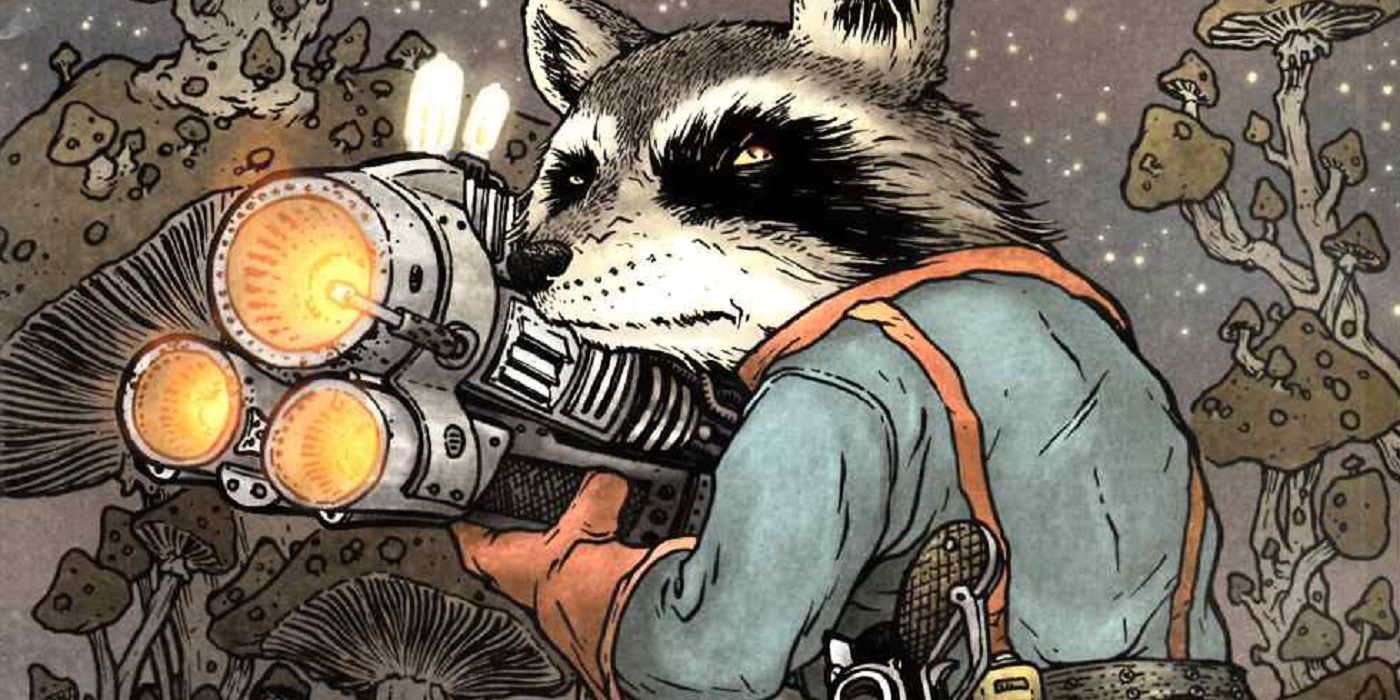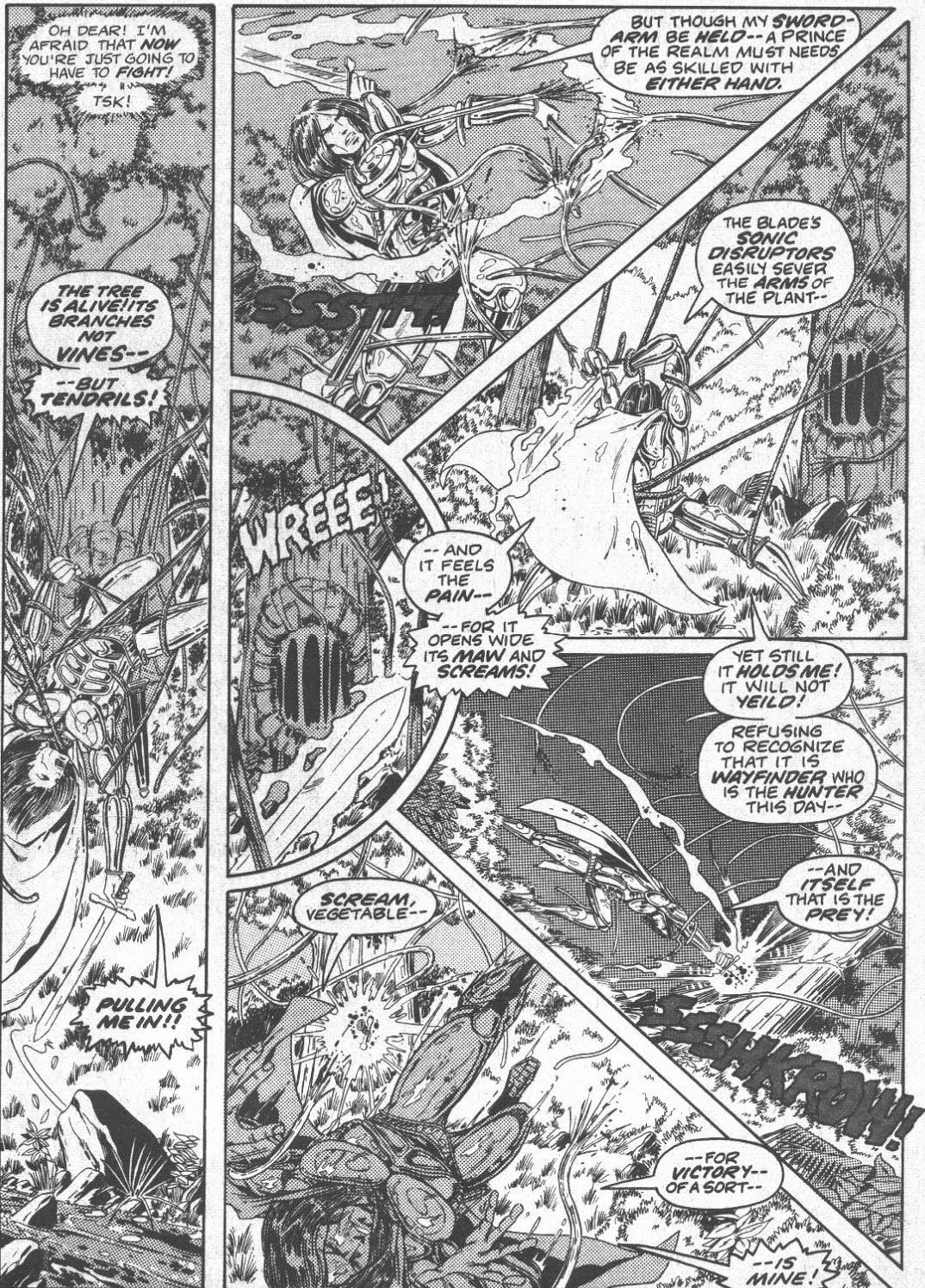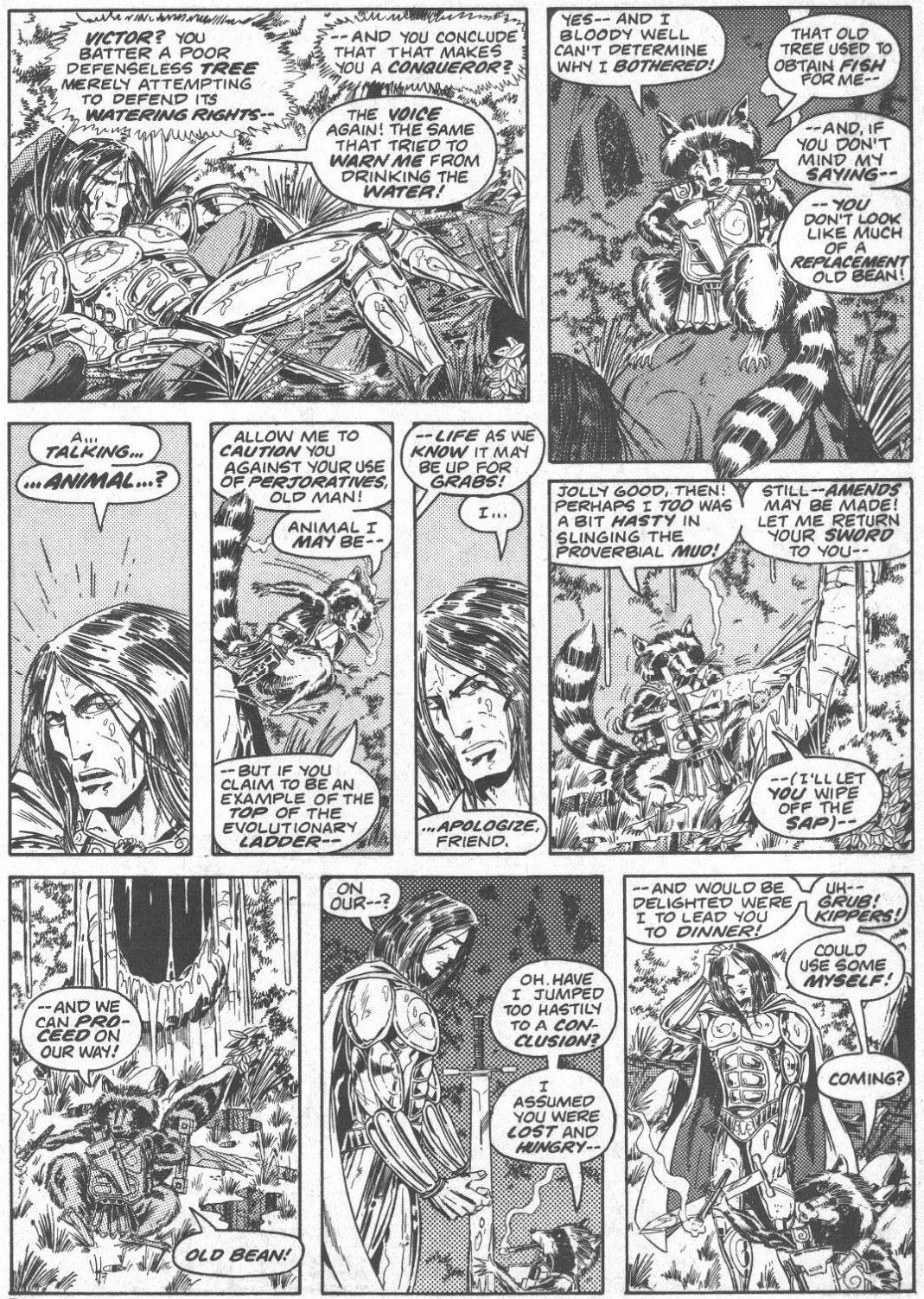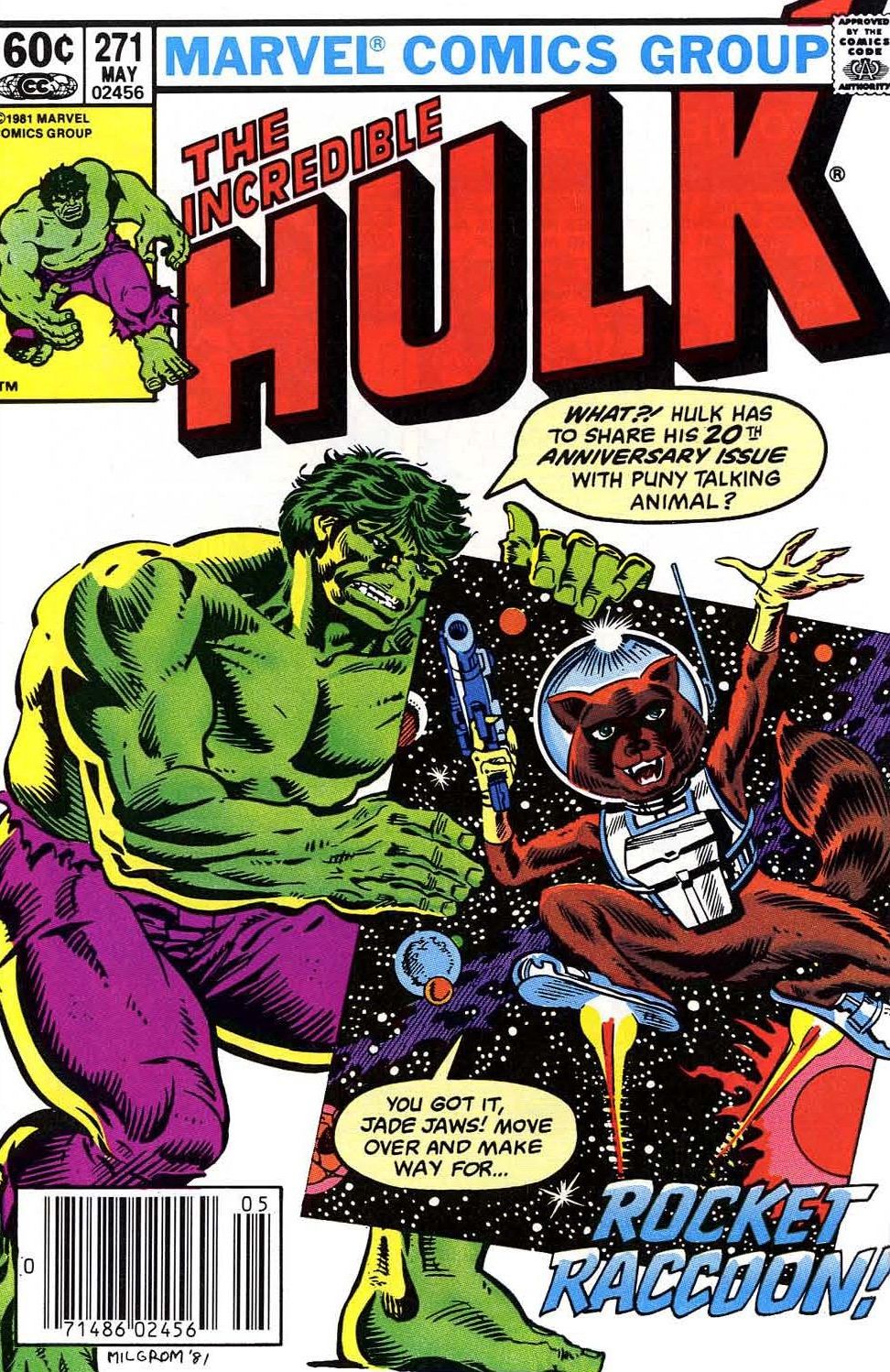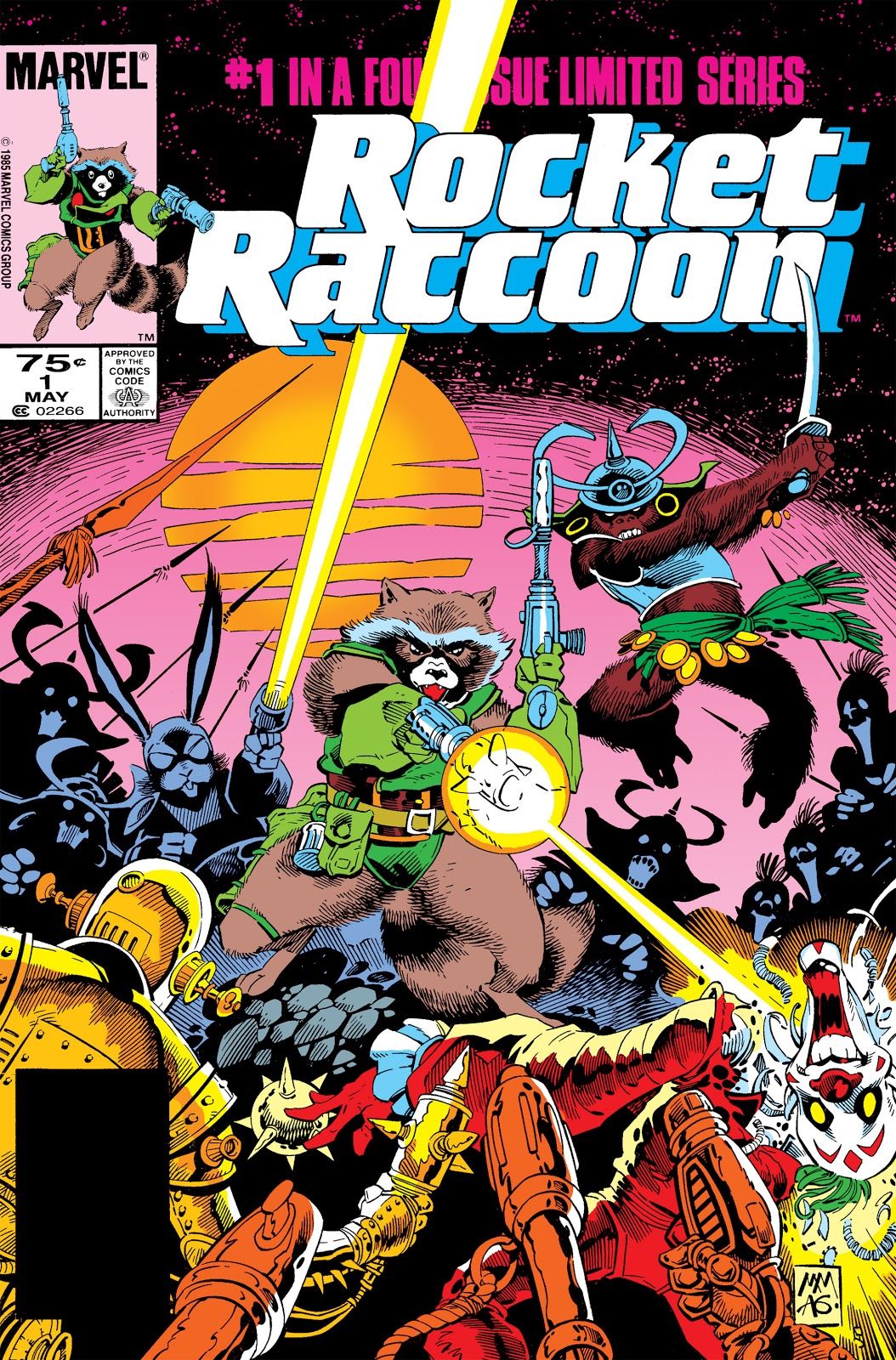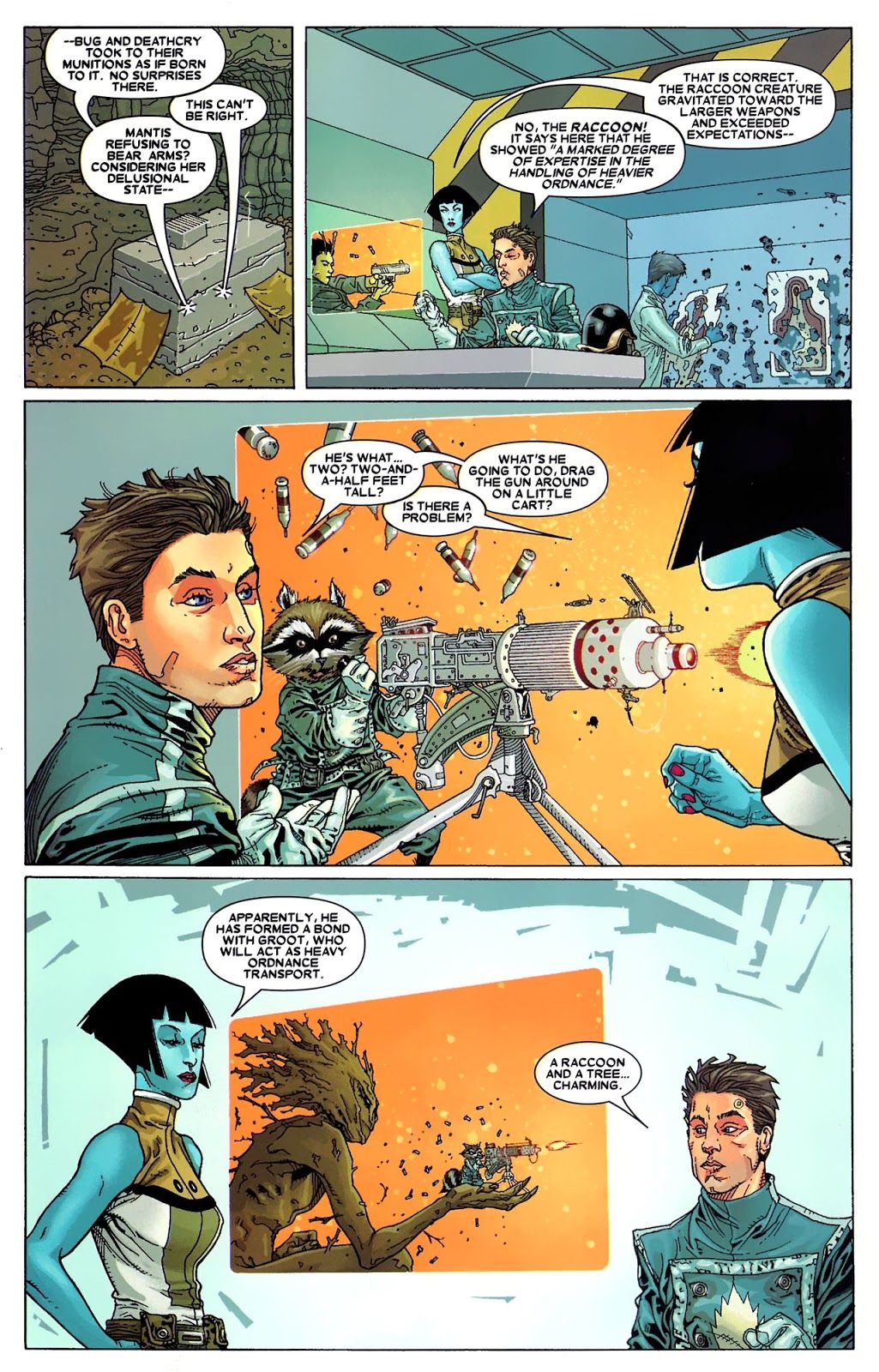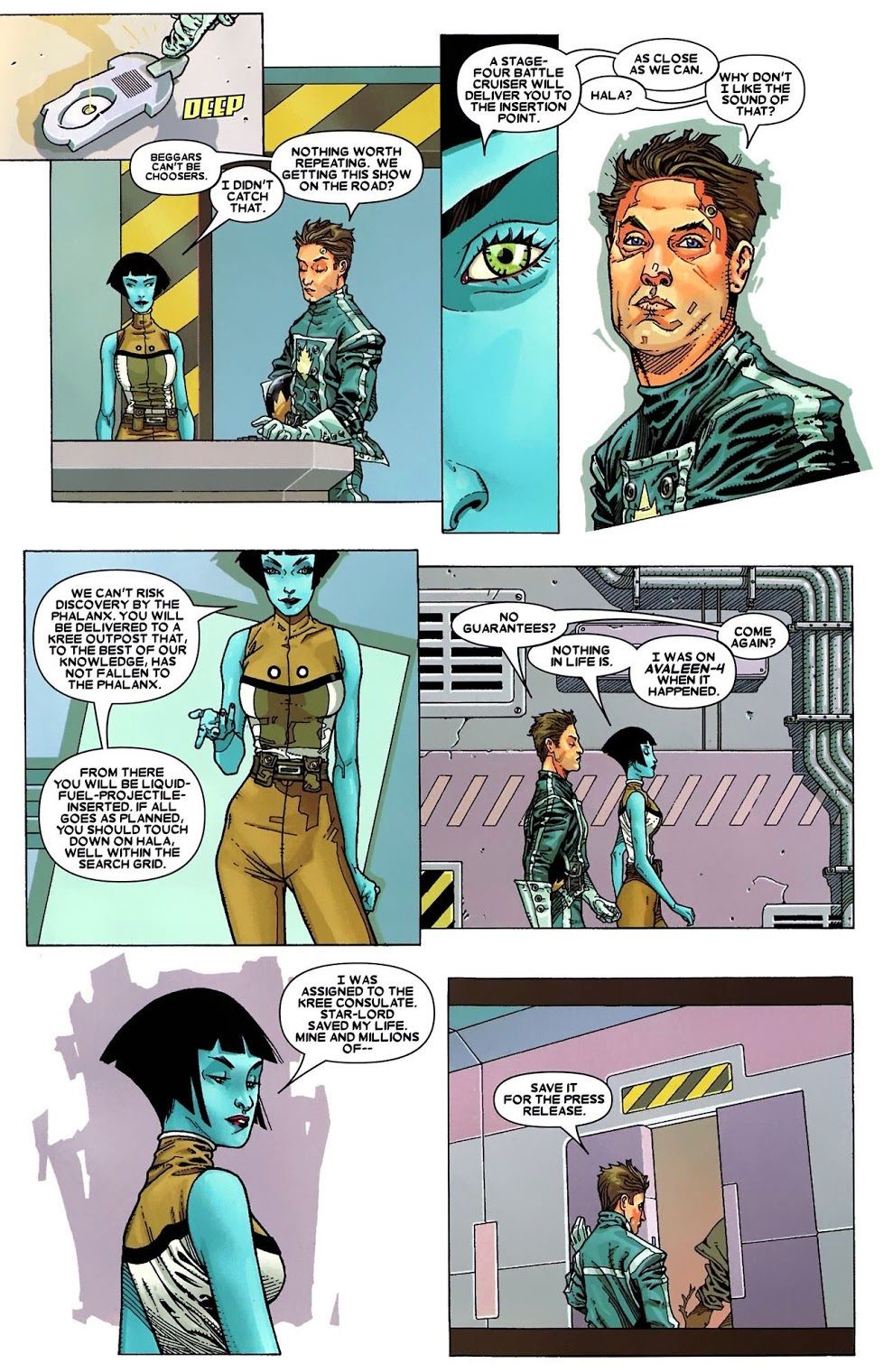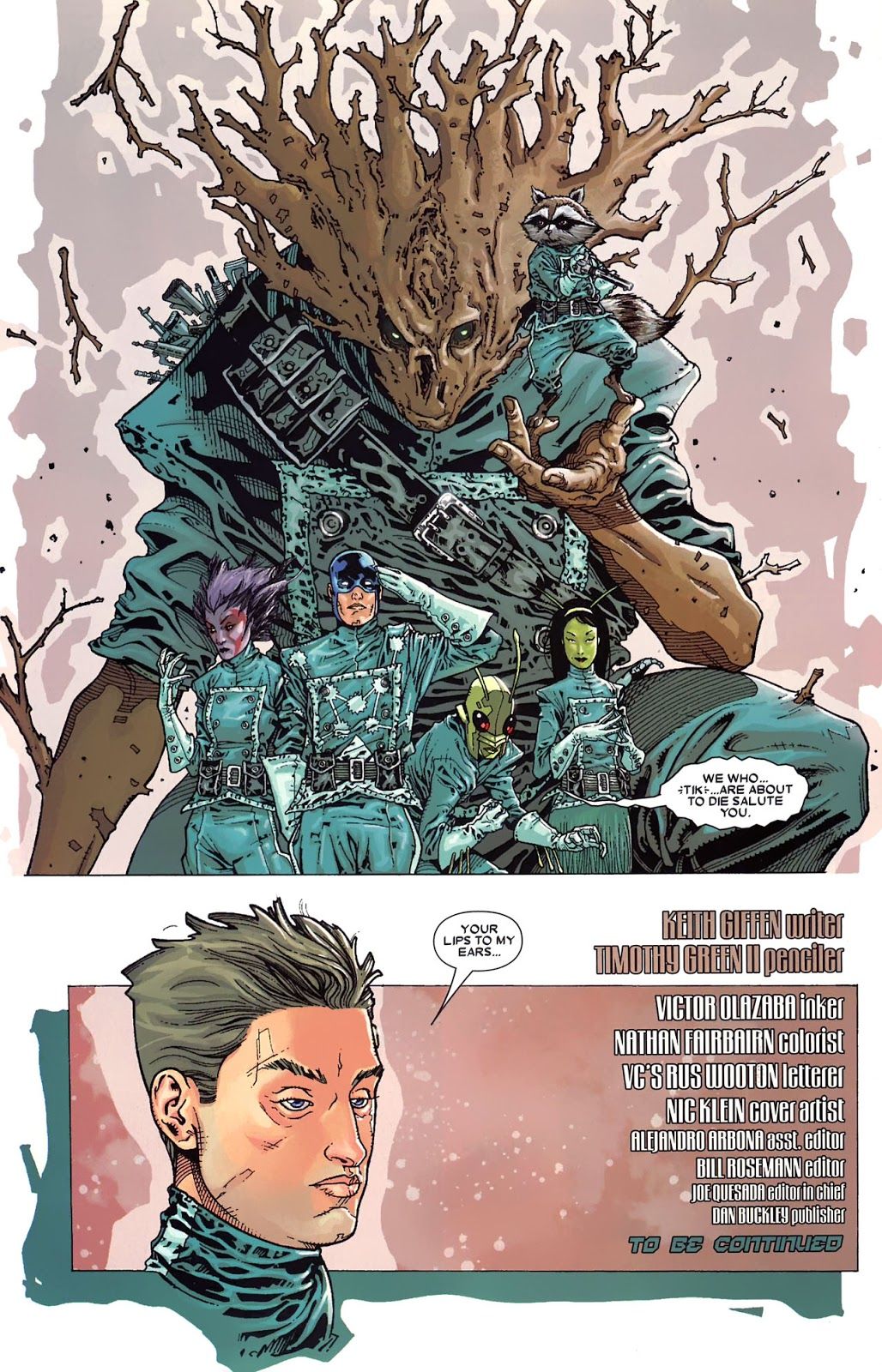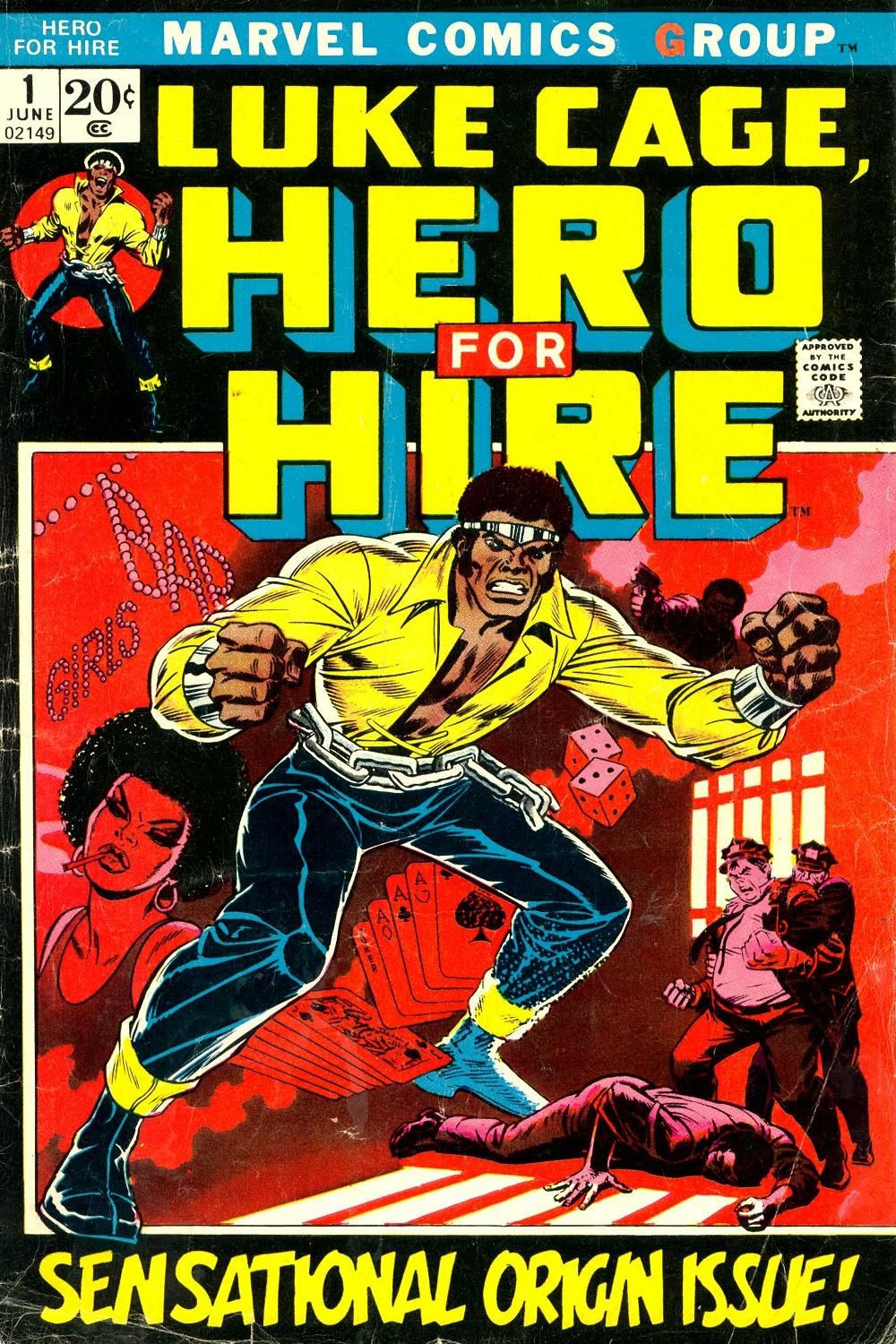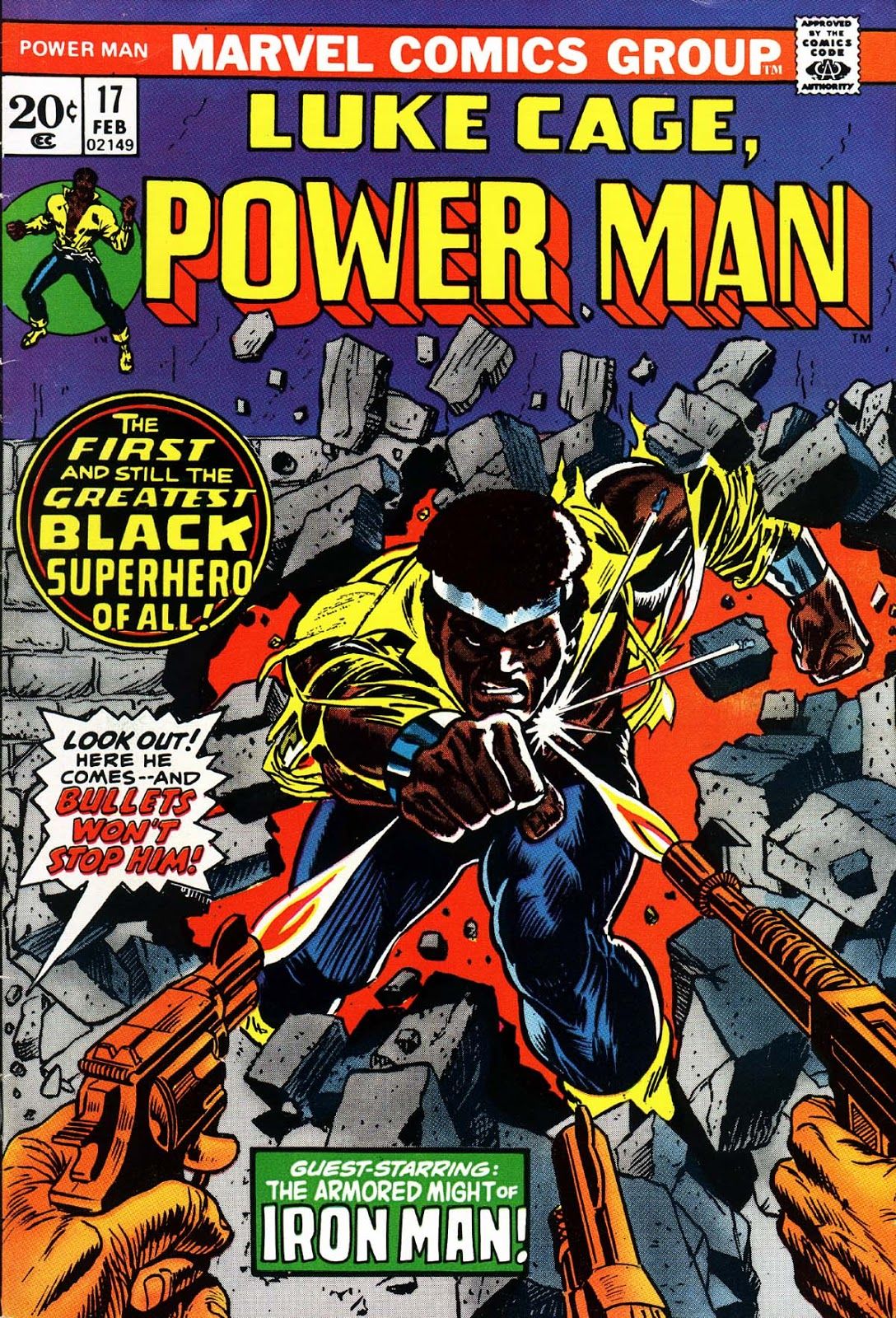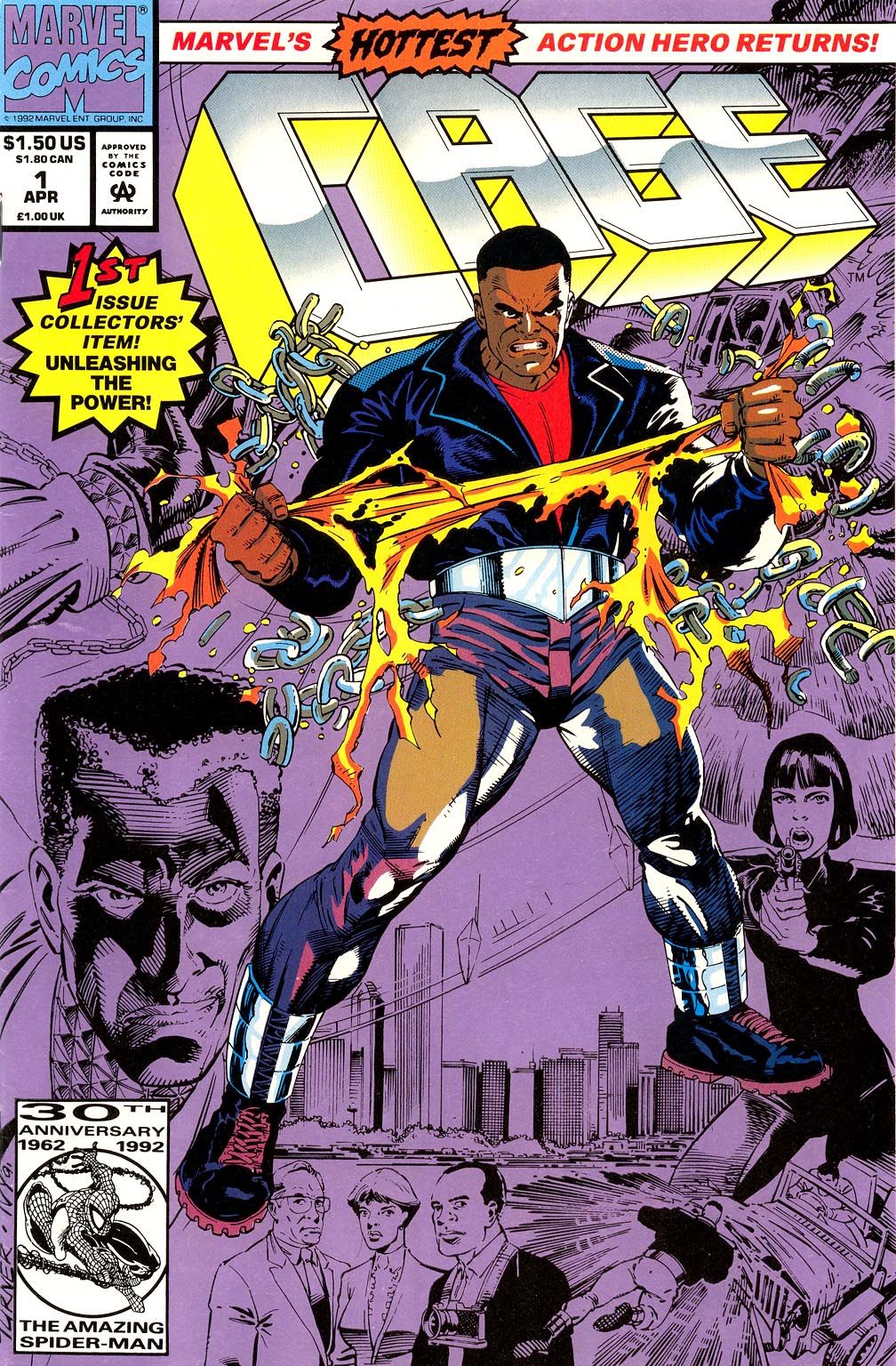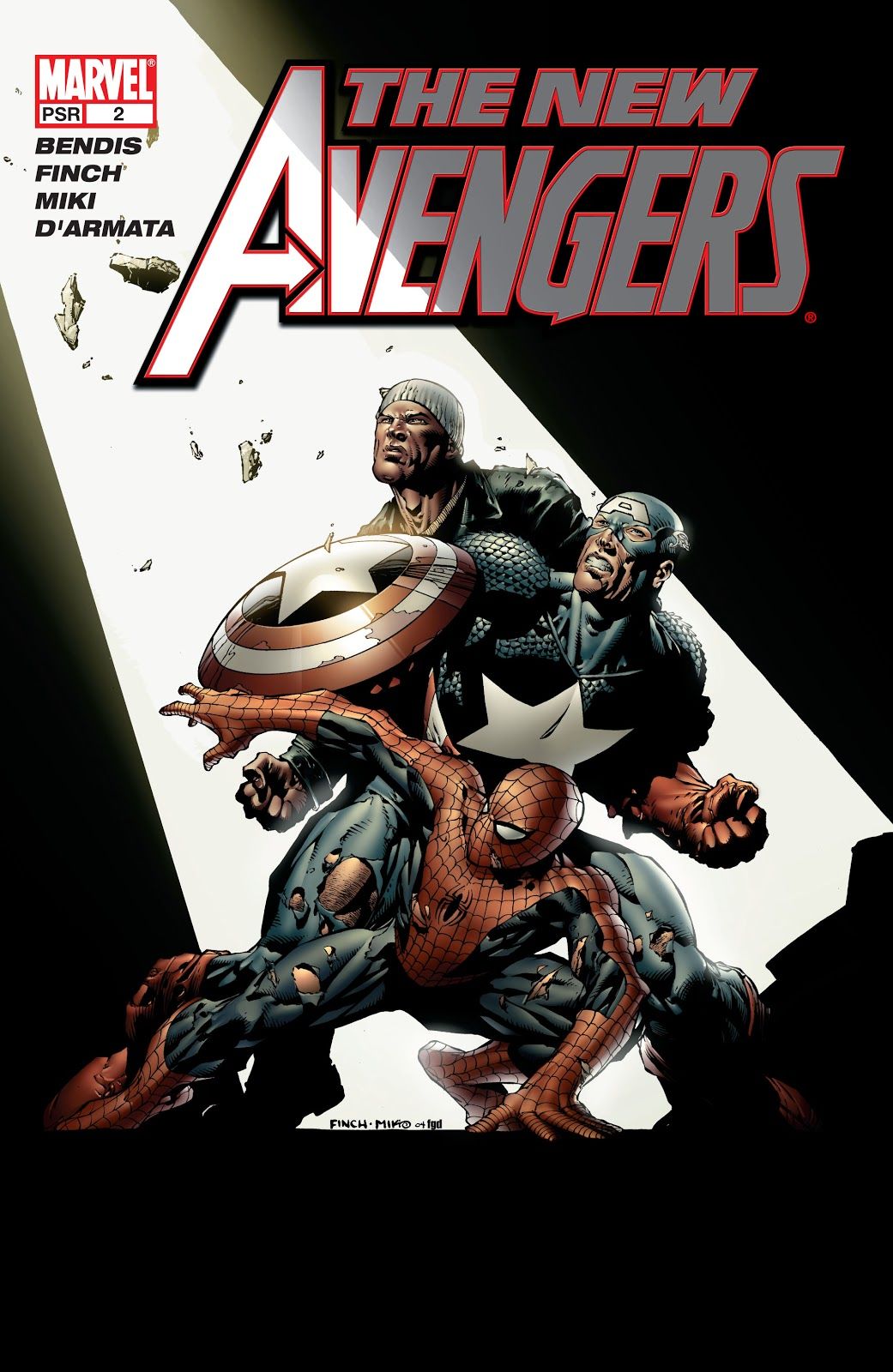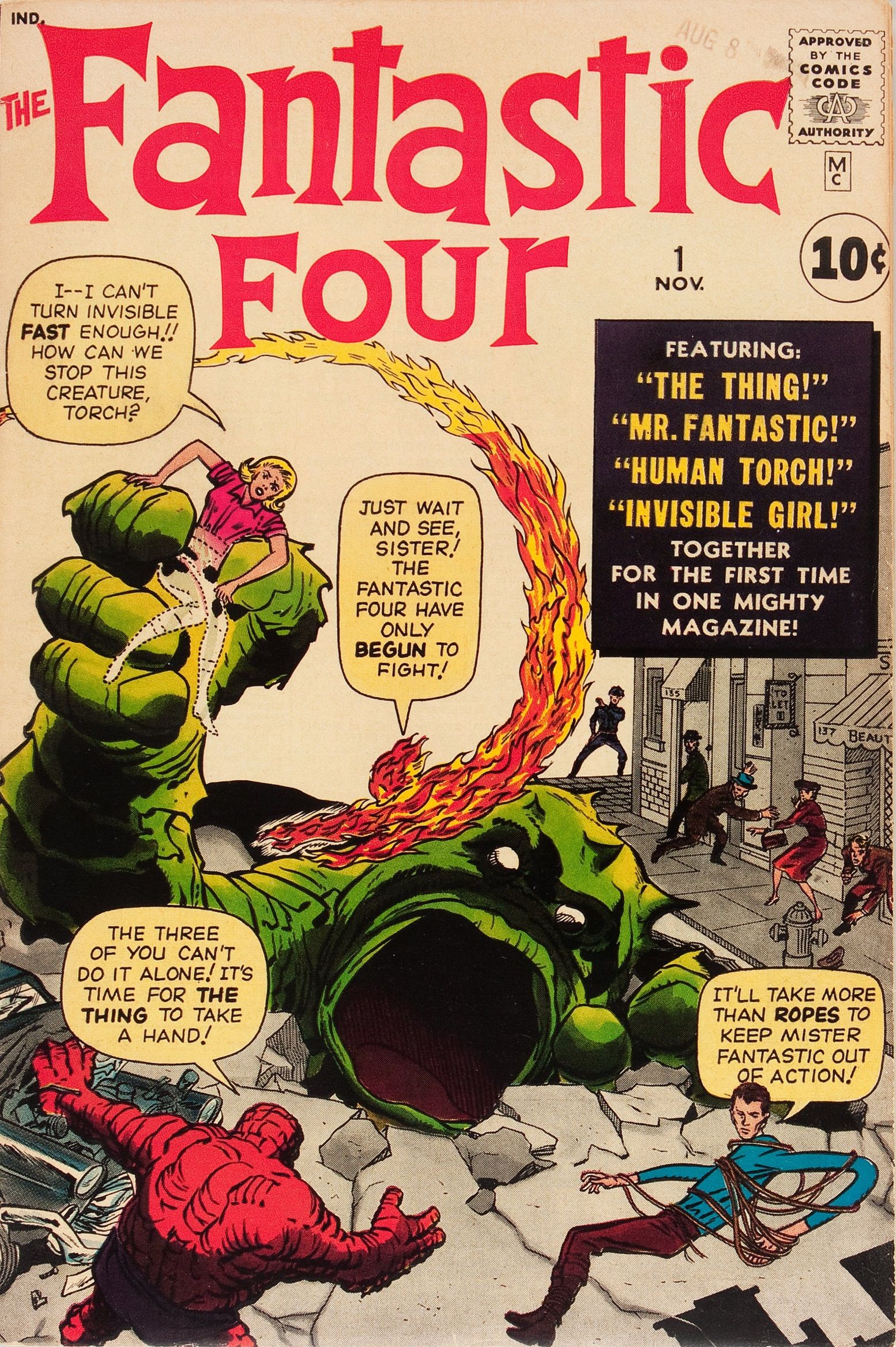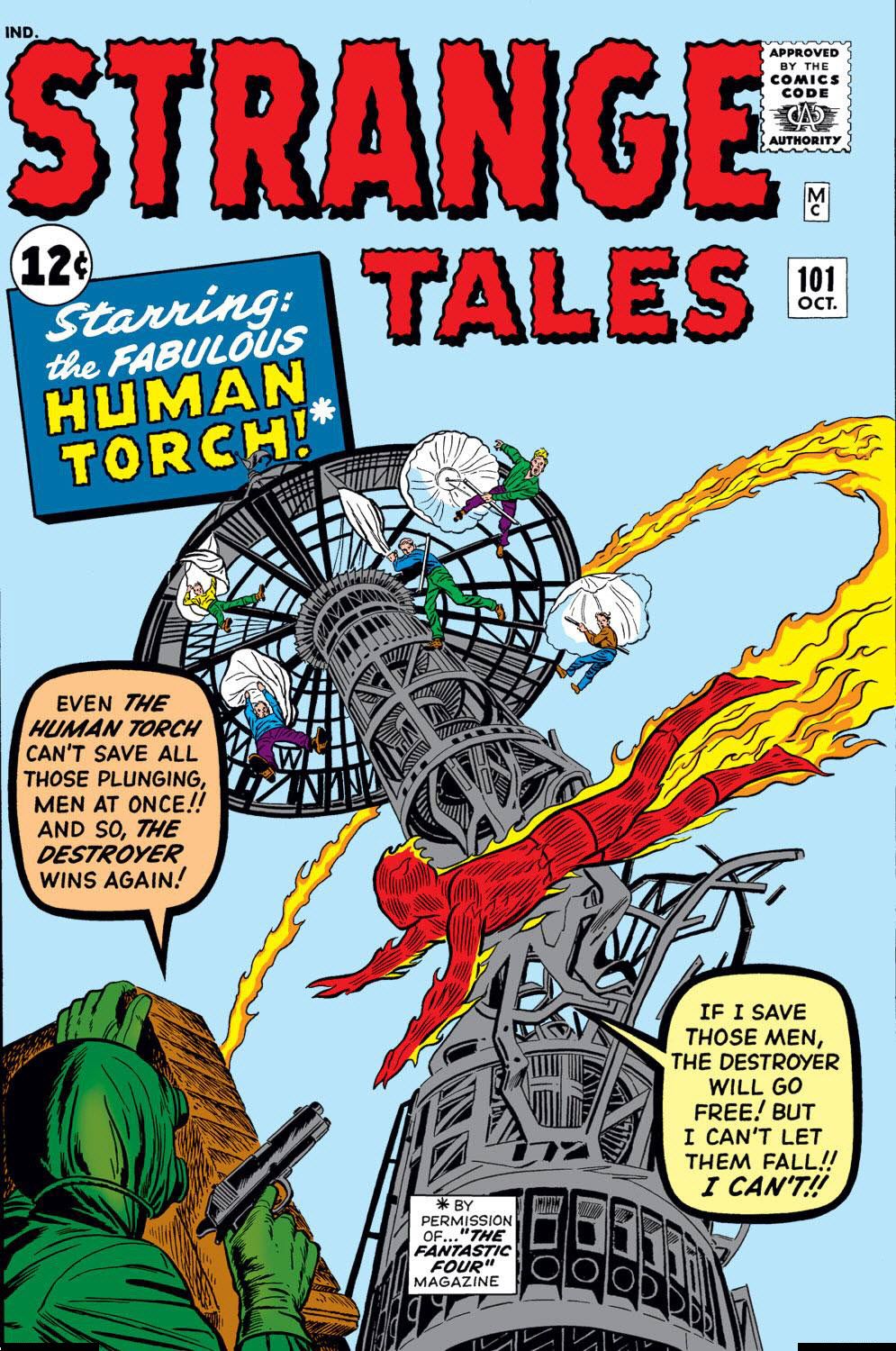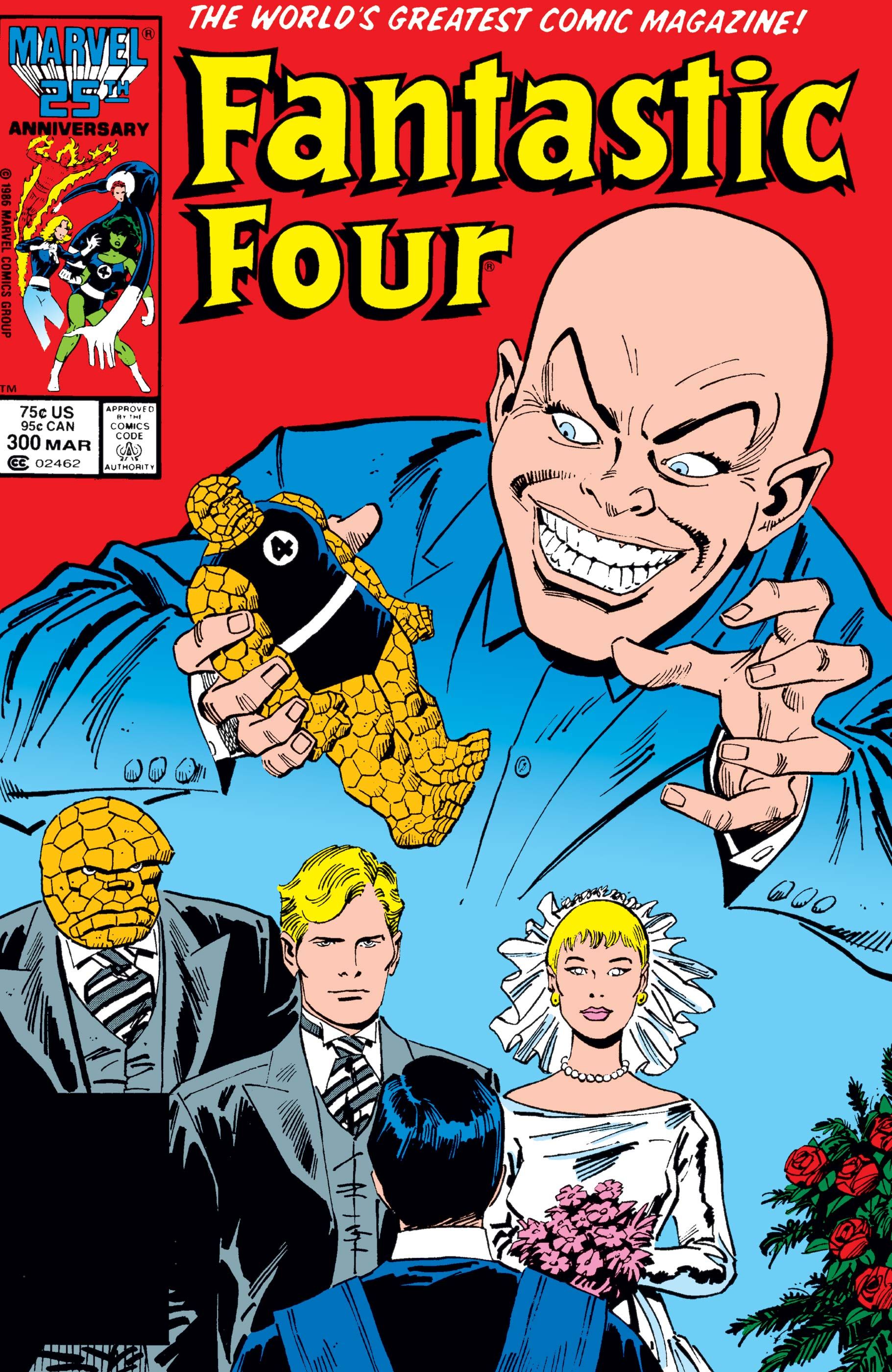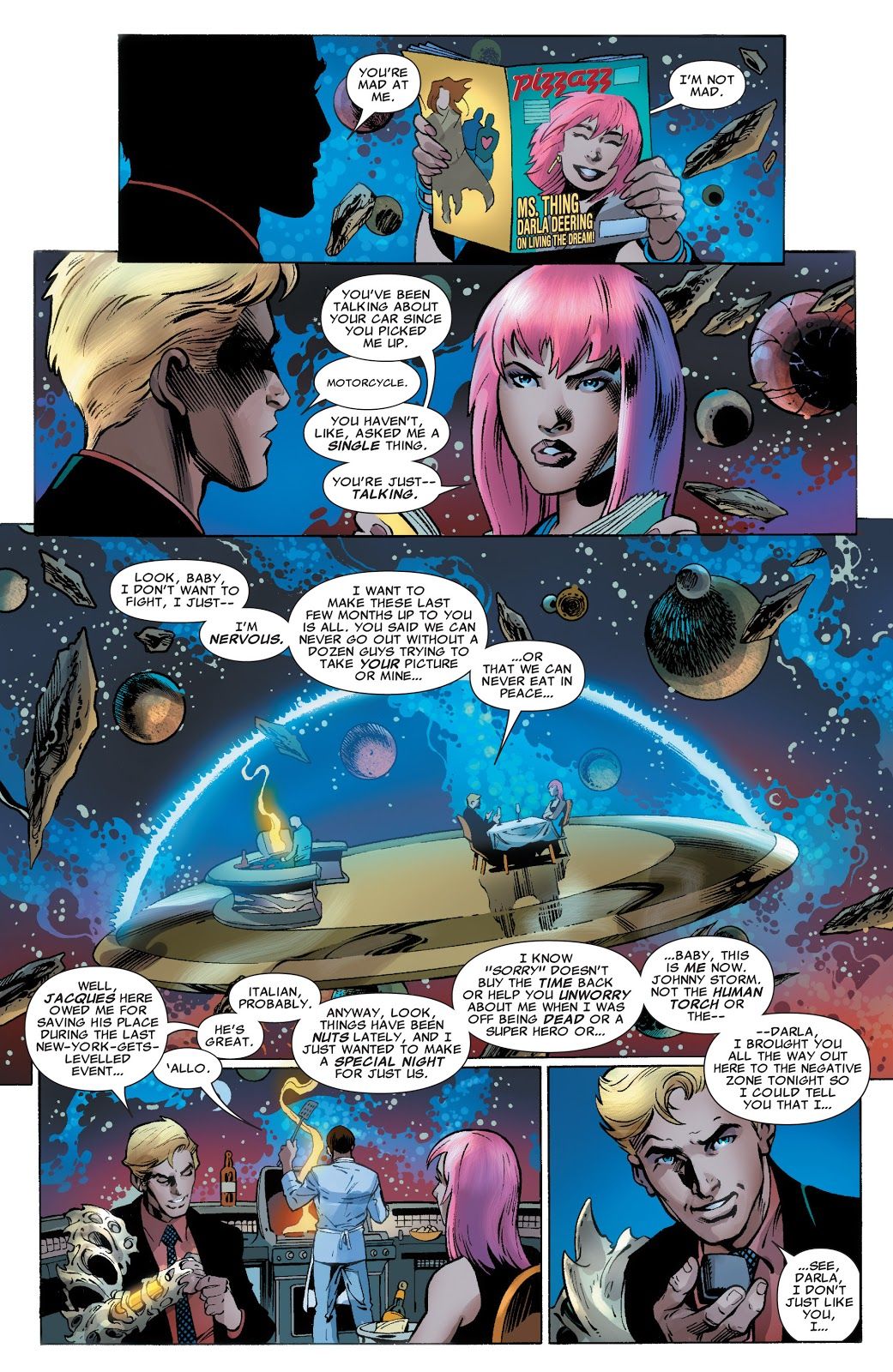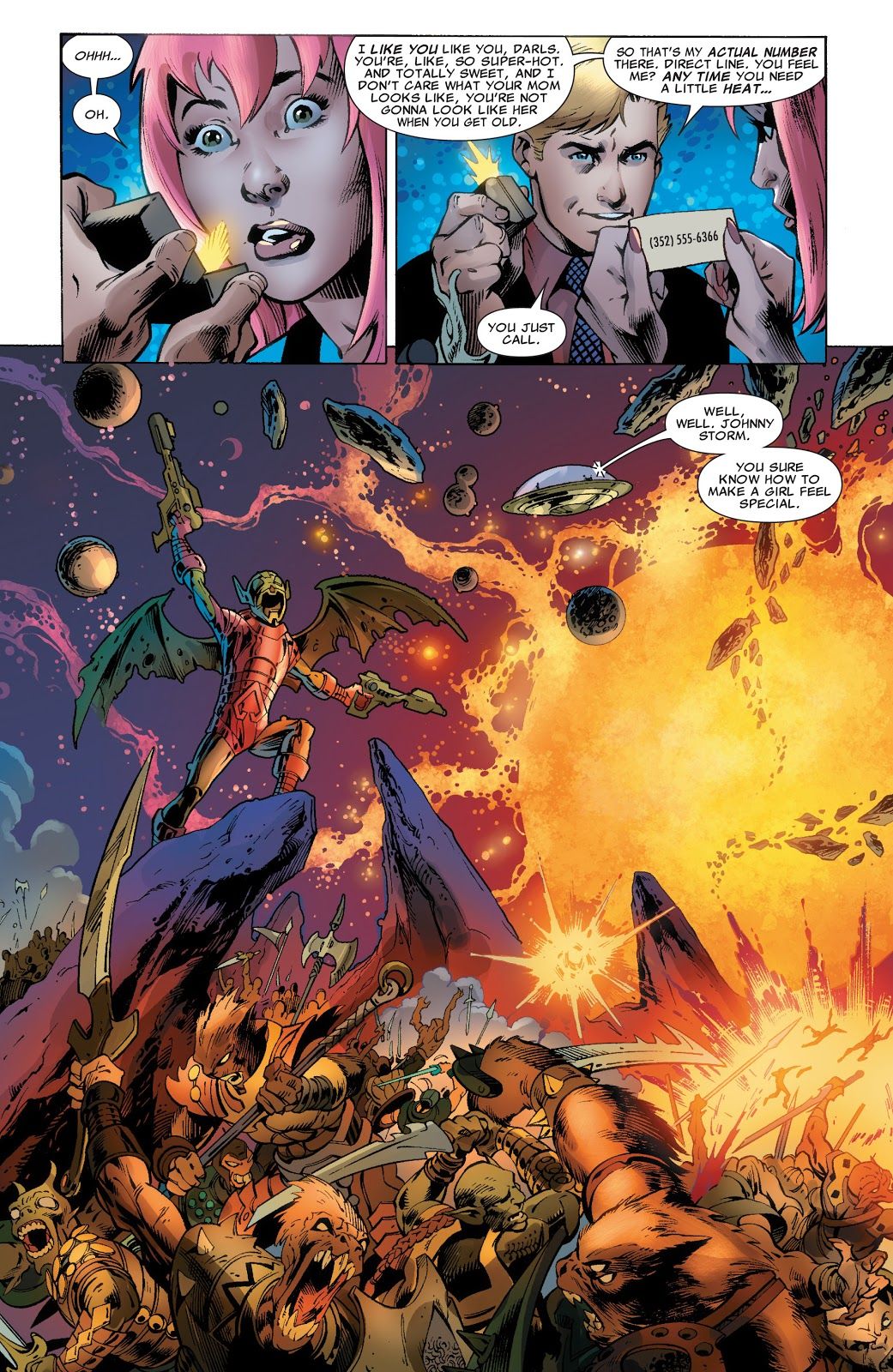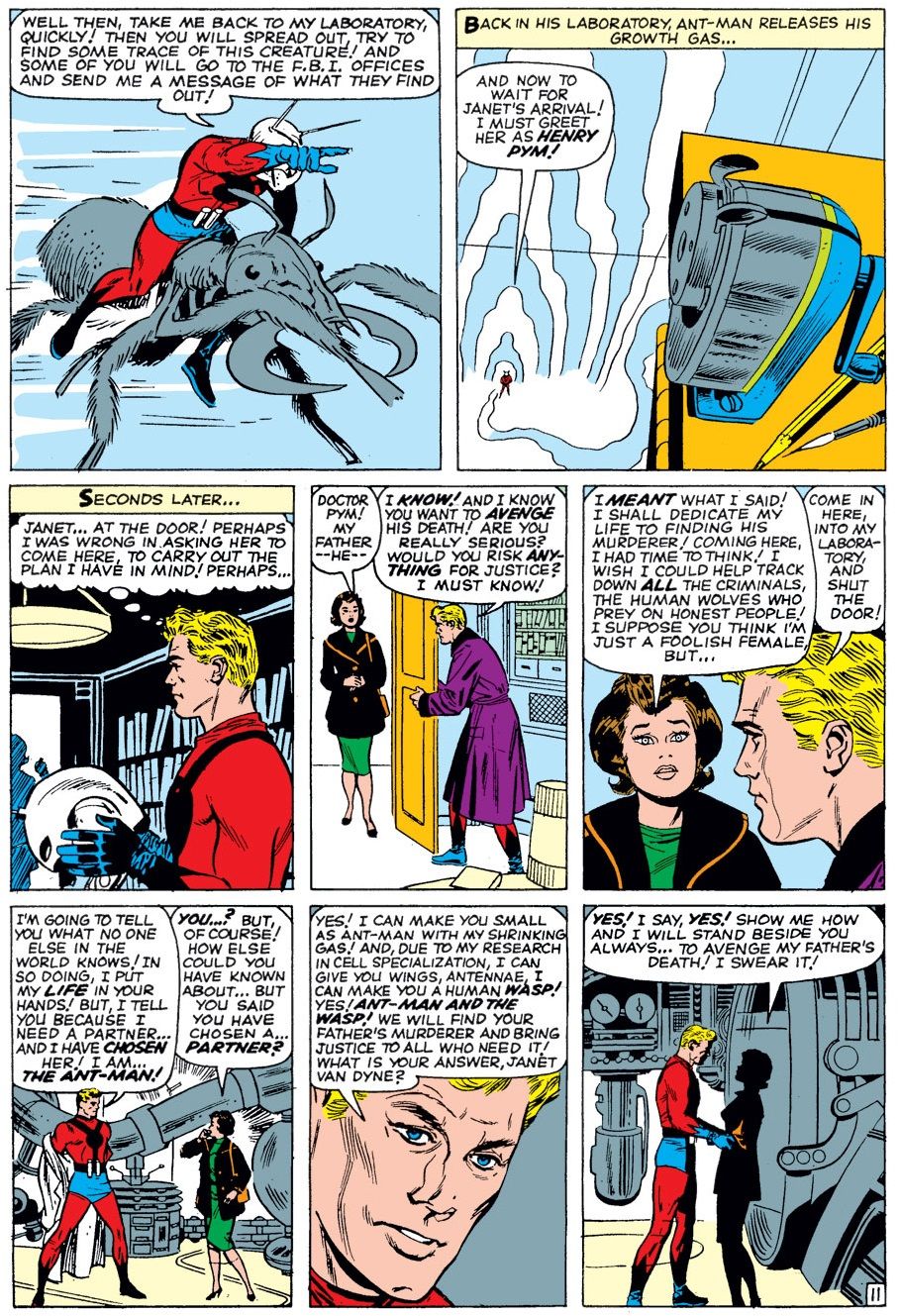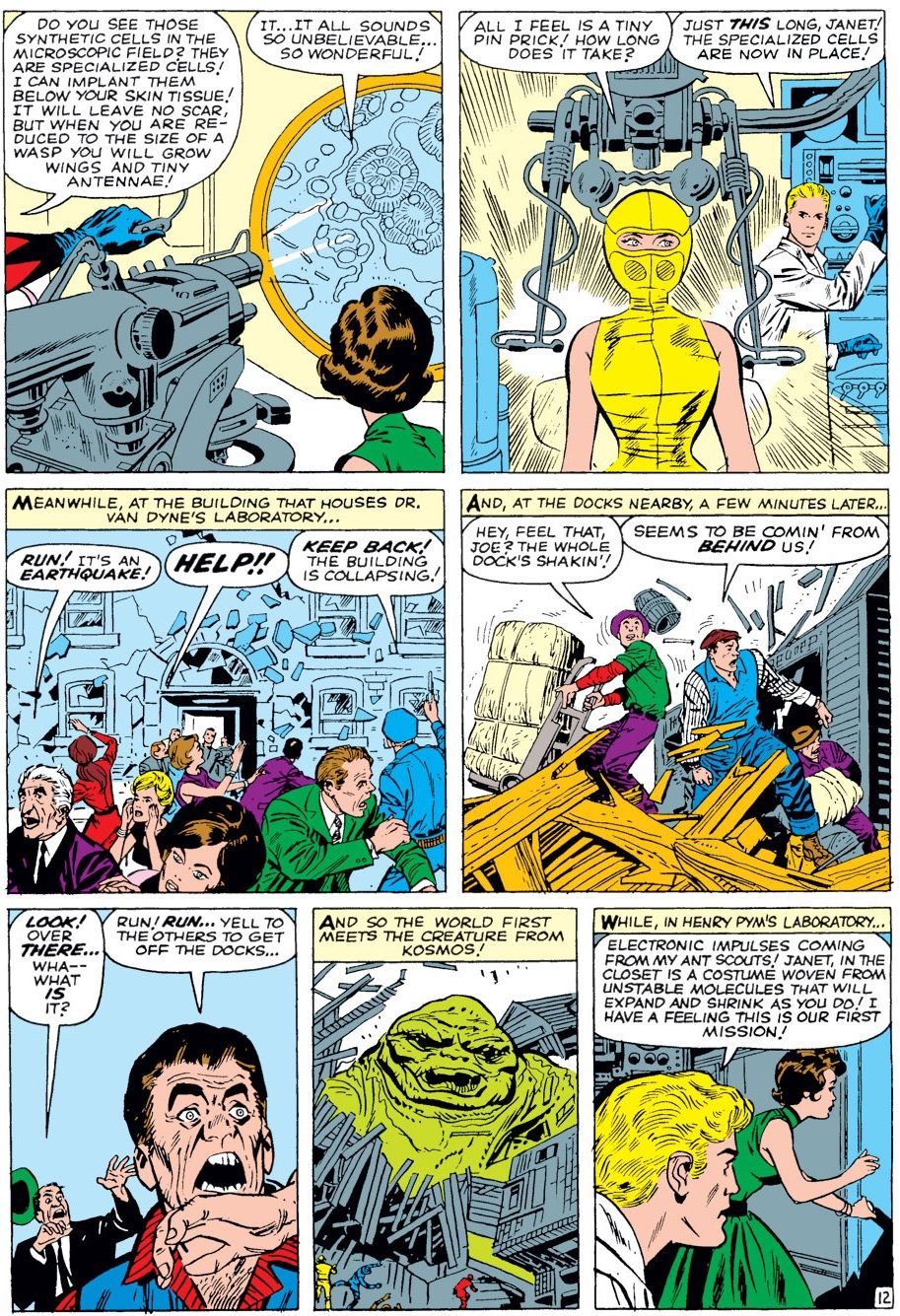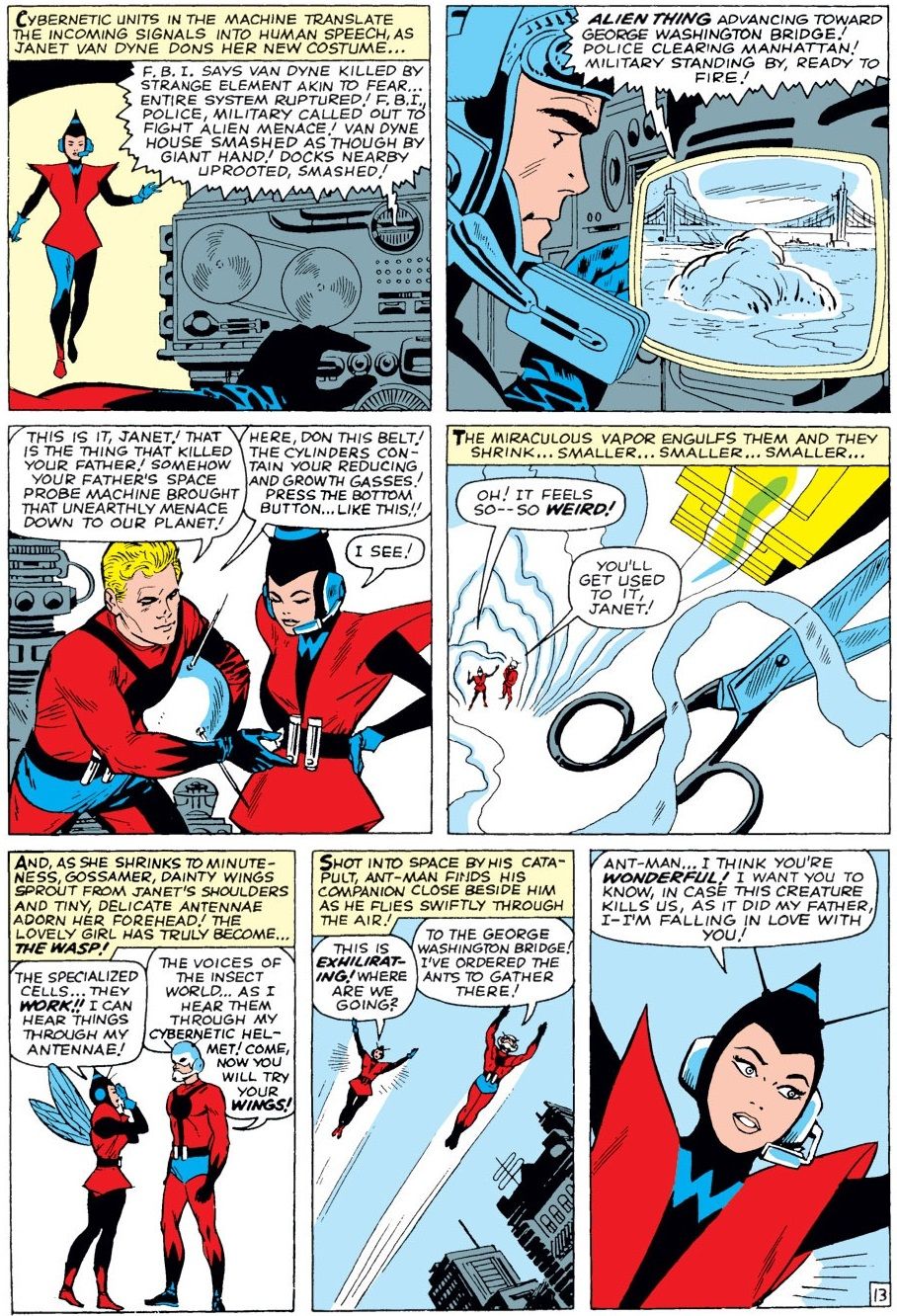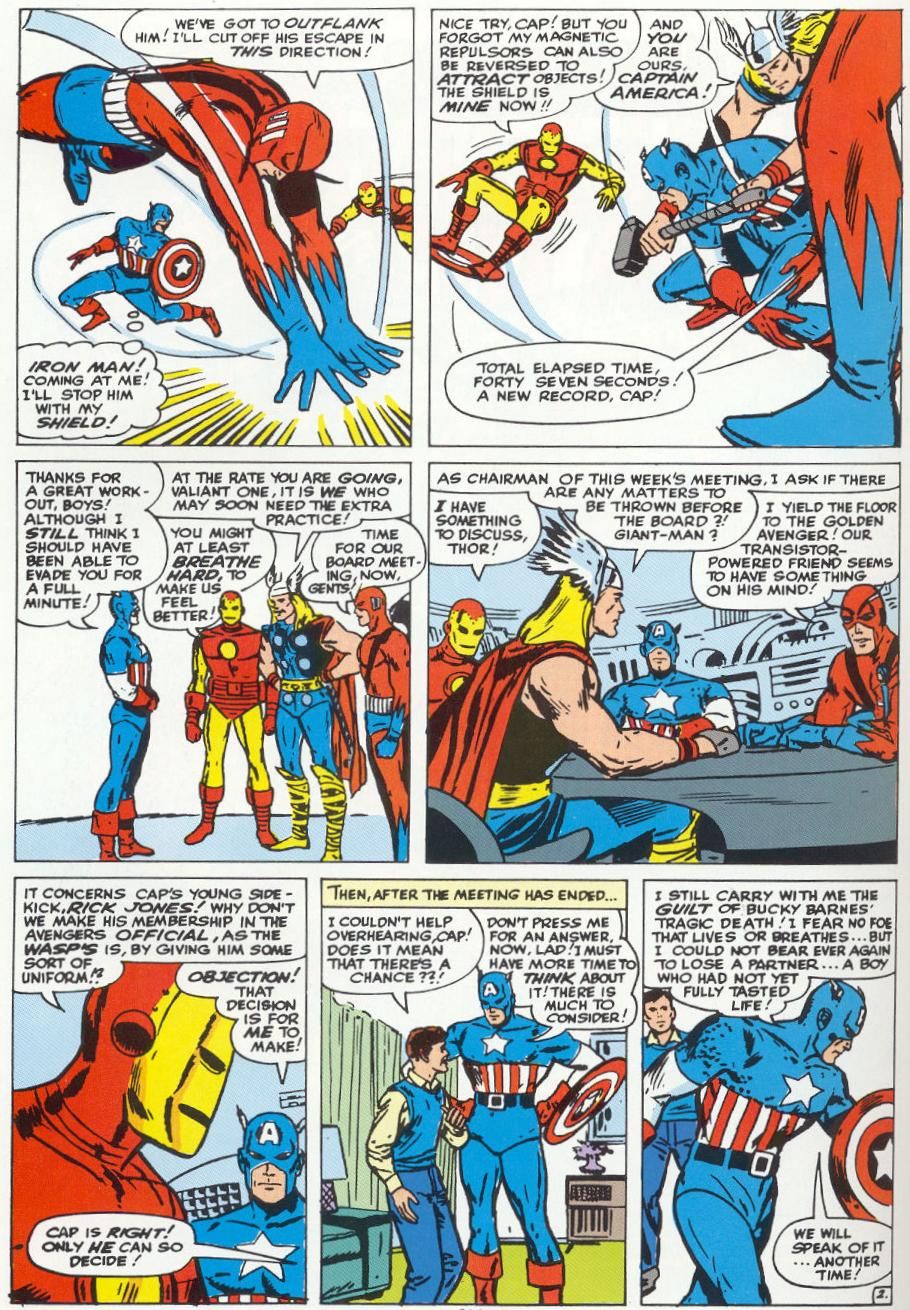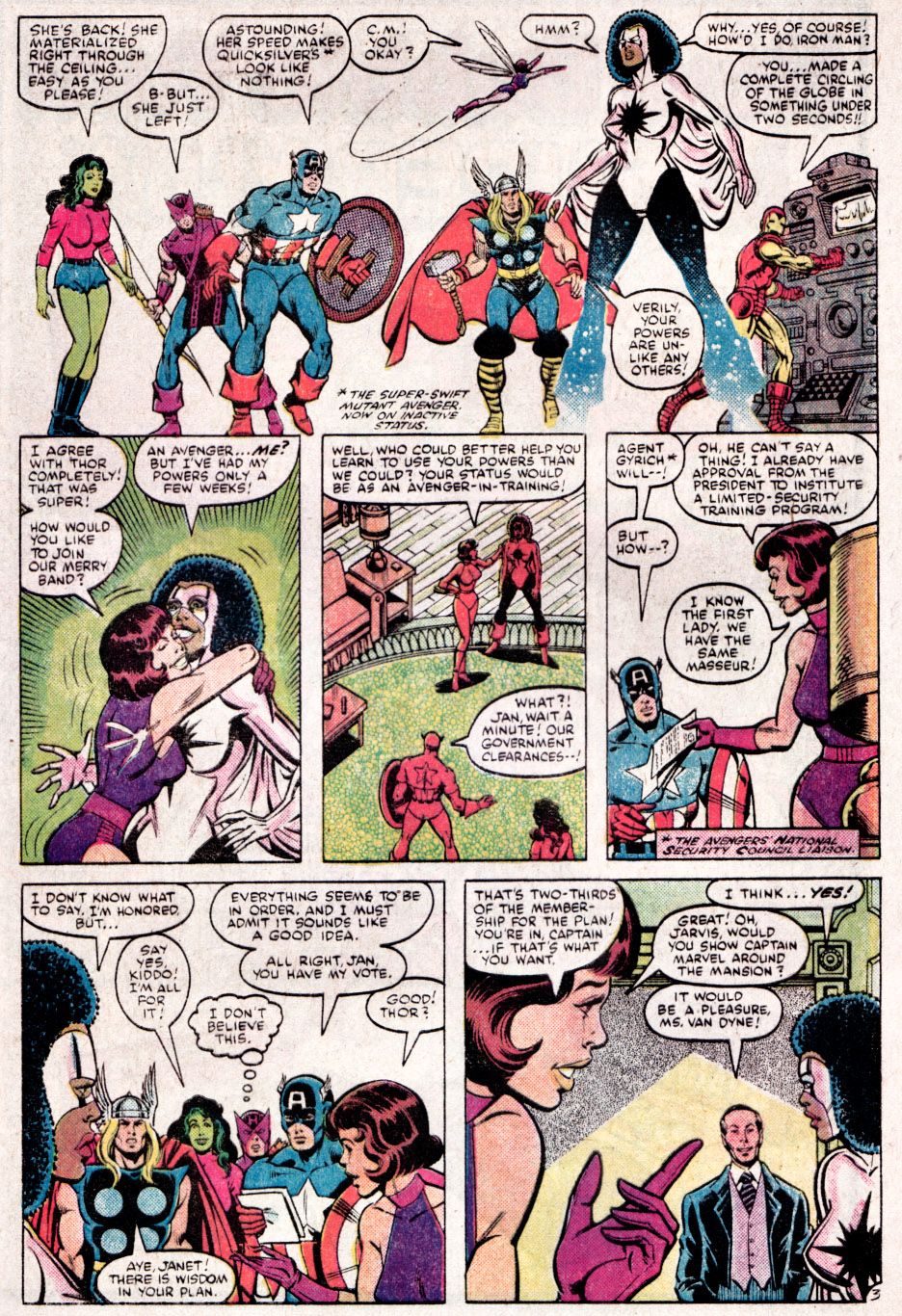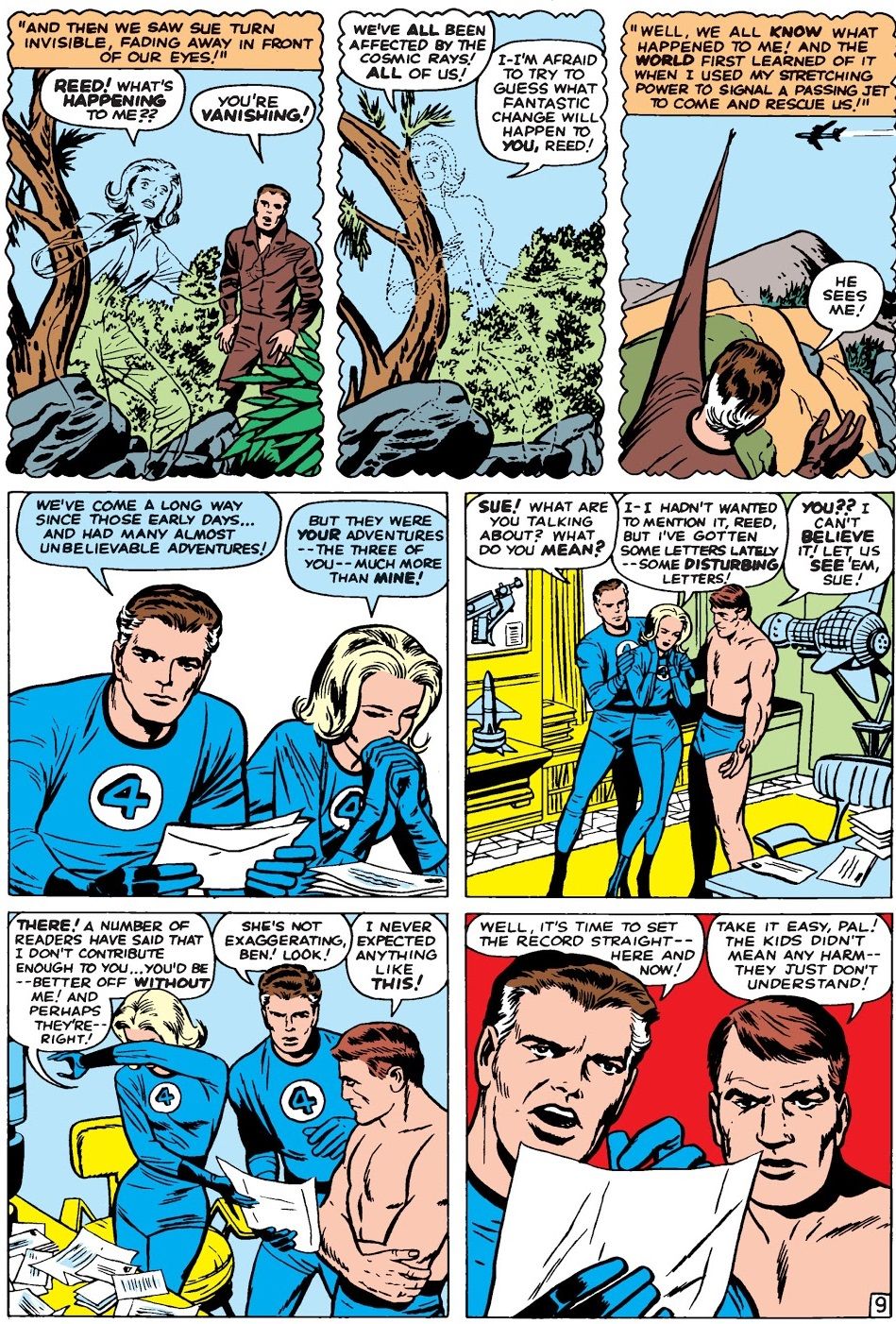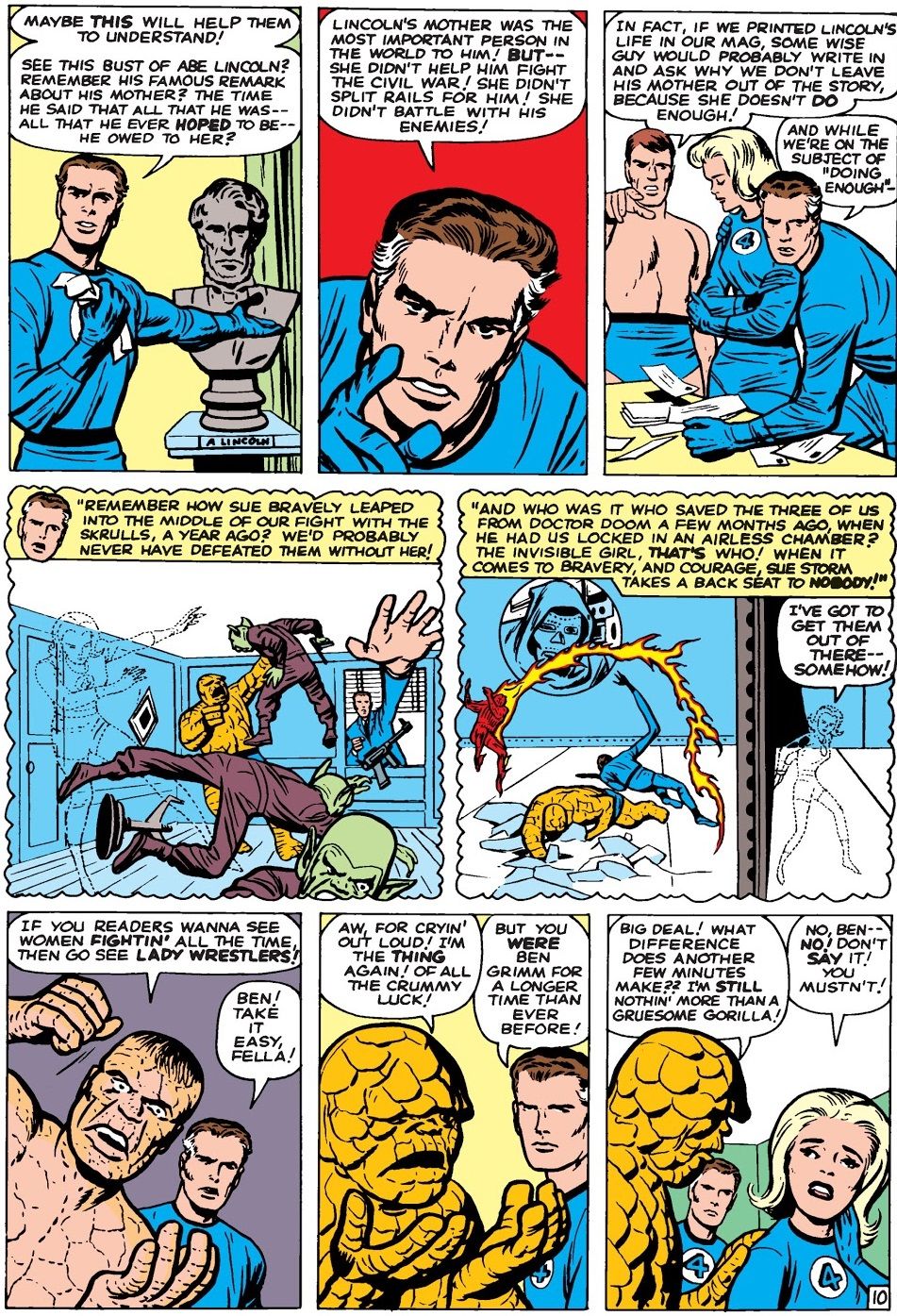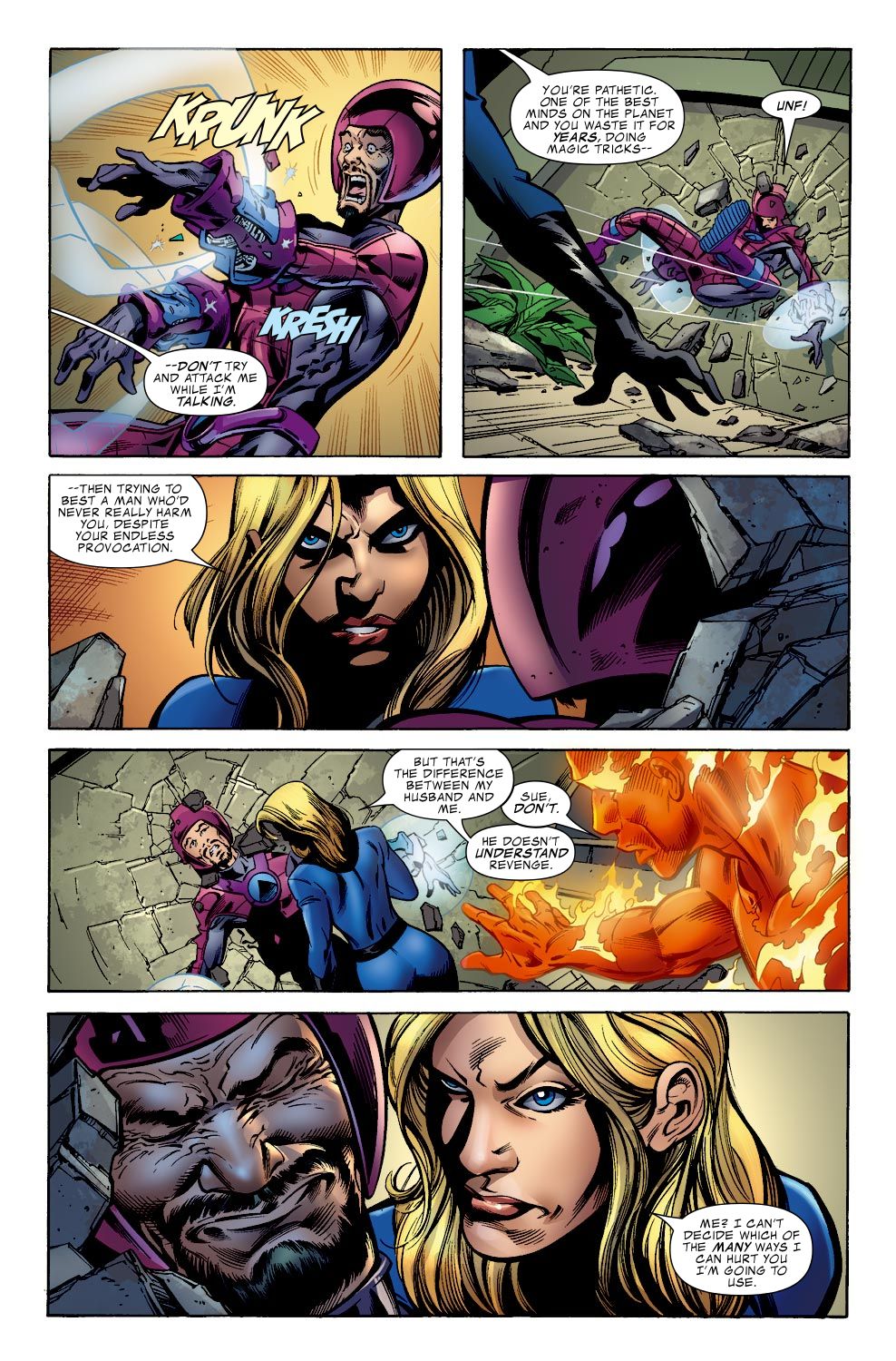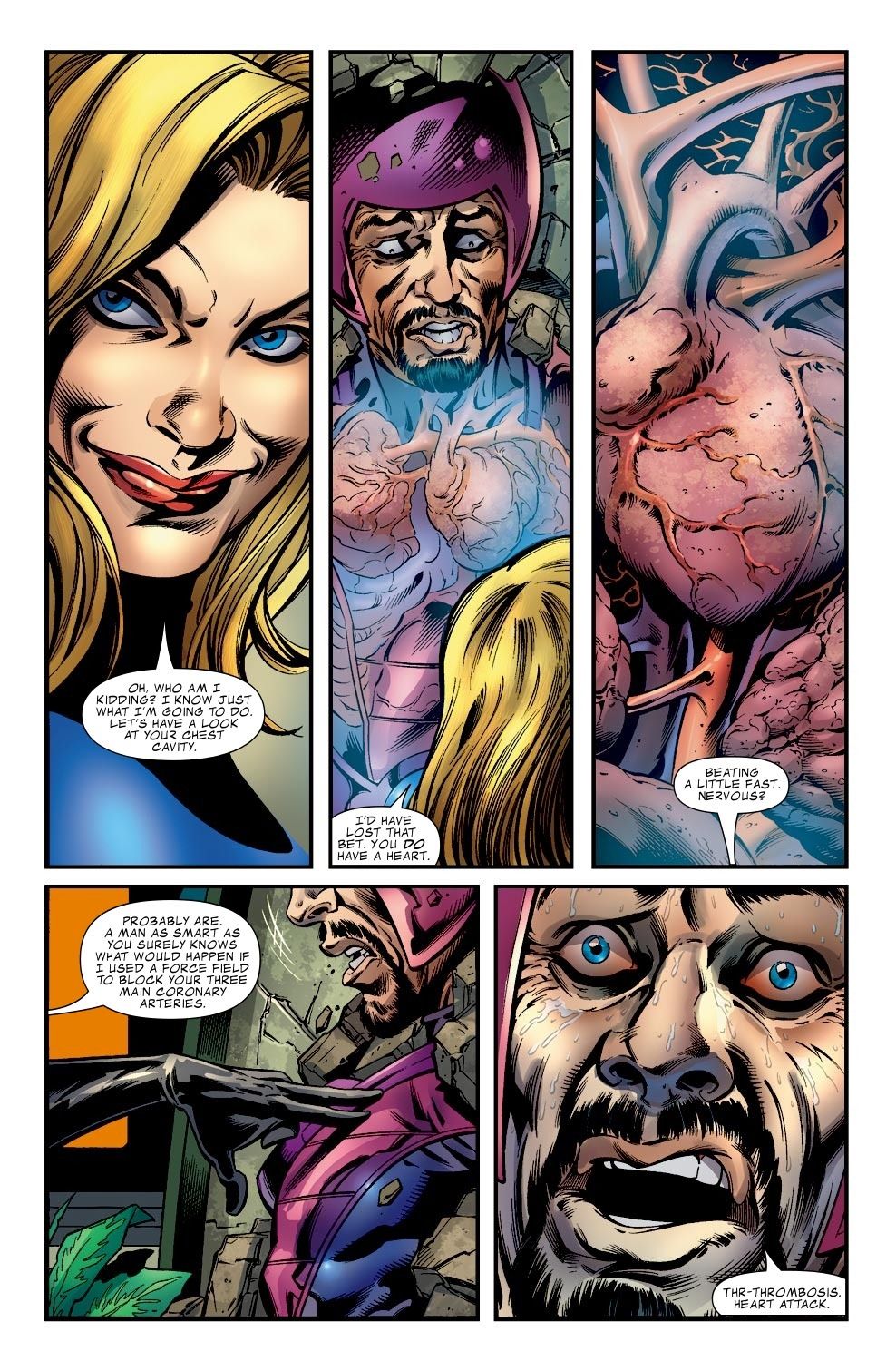After nearly 1,100 ballots were cast, YOU the reader ranked your favorite comic book characters from 1-10. I assigned point totals to each ranking and then tabulated it all into a Top 50 list. We're now revealing that list throughout the rest of the month. The countdown begins now...
In the past, I've typically done sort of "biographies" for each of the characters on the list, but you know what, they're on the Top 100 DC and Marvel characters list, I think we should be working under the assumption that you all pretty much know the basic information about these characters. Instead, I'll just write about whatever interests me about the character in question, including a notable comic book moment featuring the character.
50. Rocket Raccoon - 283 points (3 first place votes)
A lot of characters on this list have had odd little journeys to "the top," as it were, but few of them were intended as one-off throwaway jokes like Rocket Raccoon (oddly enough, there was another famous Marvel character, who did not make the list, Howard the Duck, who was ALSO an example of a mostly throwaway gag that turned into a major character). Introduced in a back-up story in the black and white magazine, Marvel Preview, Bill Mantlo and Keith Giffen introduced "Rocky Raccoon" specifically as a throwaway gag reference to the Beatles song by the same name.
Six years later, though, Mantlo decided to bring the character to the Marvel Universe proper, introducing him in an issue of his Incredible Hulk run as ROCKET Raccoon....
Mantlo built up a whole backstory for the character, to the point where he was given an acclaimed miniseries a couple of years later, drawn by a young Mike Mignola...
The character seemed poised for a big breakthrough and then...nothing. He was basically a non-entity for the next two decades. He was even involved in gags like having an alien bad guy having what looked to be Rocket Raccoon's hide hanging on his wall. In 2007, though, editor Bill Rosemann was putting together a new team of disparate cosmic heroes for the sequel to Marvel's 2006 hit cosmic crossover, Annihilation. Amusingly, thirty years later, Rocket Raccoon's co-creator, Keith Giffen, was now writing the character as part of a sort of "Dirty Dozen" team in Annihilation Conquest: Starlord (art by Tim Green III)...
That team, of course, was the basis for the modern day version of the Guardians of the Galaxy, which was adapted by James Gunn for the hit Marvel film, making Rocket Raccoon quickly transform from a non-entity into one of the most famous Marvel characters around!
49. Luke Cage - 284 points (2 first place votes)
One of the amusing things in comic book history is what you do when you respond to trends in pop culture and then those trends go away. For instance, in 1972, Roy Thomas, Archie Goodwin, John Romita and George Tuska decided to introduce a Marvel answer to the then-popular Blaxploitation trend in movies at the time...
This take on a superhero title was a novel one, as Luke Cage did not have a superhero name. He was just "Luke Cage." He also charged people for his services, as he was a "hero for hire." However, "Blaxploitation" was not exactly a long-lasting trend in cinema, so soon Marvel had to come up with a different approach for the character, who was not a huge hit out of the box, sales-wise. So after a year or so, Marvel decided to re-brand the character as a more standard superhero, gaining the name Power Man...
After a few years, Marvel came up with a clever idea. They had another title, Iron Fist, that was also launched out of a then-popular trend in the movies and television, where martial arts films and TV shows were big for a while (especially the TV series, Kung Fu). Neither series was doing particularly well, so Marvel decided to combine the two into one series, Power Man and Iron Fist...
It was a weird idea and yet it worked out, with the series running into the mid-1980s, when it was canceled as part of Marvel's launch of the New Universe (they needed to clear out some books on the production schedule and even though Power Man and Iron Fist was still selling, it was obviously on the low end of the sales bracket), editor Denny O'Neil decided to protest the move by having the final issue end with Iron Fist murdered and Cage on the run, framed for the crime.
That status quo went on for a remarkable five years, with Cage basically going into comic book limbo. Eventually, Iron Fist turned out to be alive and Cage was given a revamped look and another ongoing series in 1992 (infamous at the time for a promised special cover that just never happened)...
However, by the turn of the 21st Century, Cage was mostly in comic book limbo again. That was changed when Brian Michael Bendis made Cage a member of the initial case for Marvel's then-biggest title, New Avengers, which solidified the character as a major force for Marvel for years to come...
this obviously led to Cage getting his own Netflix series, as well.
48. Human Torch - 286 points (2 first place votes)
In 1961, Marvel owner and publisher, Martin Goodman, wanted Stan Lee to do another superhero revival. They had tried one in the early 1950s, but it had flopped. With DC Comics having a lot of success with their superhero revivals of the late 1950s/early 1960s (leading to a new team book, Justice League of America, that was doing well), Goodman wanted in on it and so he directed Lee to come up with a new team series. Goodman's original intent was to once again revive their own superheroes, like Captain America, Namor and the Human Torch. Lee thought that a fresh take was needed and so he and Jack Kirby set out to come up with a new team based on Kirby's then-recent Challengers of the Unknown team for DC Comics. However, as a sort of compromise, Lee agreed to introduce a NEW version of the Human Torch on this new superhero team, so there would be at least a little bit of familiarity there for Marvel's superhero revival, known as the Fantastic Four.
Naturally, the Human Torch was then the first member of the team that Marvel decided to break out on to his own series, which launched very soon after the debut of the Fantastic Four (a little under a year) in the pages of Strange Tales...
The series was a bizarre approach, as the Torch was treated like a traditional superhero despite his rather unconventional role in the Fantastic Four. For instance, they gave him a secret identity despite his identity being public knowledge over in the Fantastic Four (plus, you know, he doesn't wear a mask).
Over time, the Thing grew to become the most popular member of the Fantastic Four. Johnny Storm's problem is much the same one that I discussed for Beast Boy earlier, where he was defined early on as the young one in the group, but the problem with that is when you grow up, what is your role when you are no longer the young one?
The Fantastic Four probably overcorrected by having Johnny Storm get married (to his best friend's ex-girlfriend)...
Eventually, that marriasge was retconned away with Alicia turning out to be a Skrull operative. This allowed the writers to sort of de-age Johnny and later writers have gone back to writing him as a bit more of a youthful soul, like in Matt Fraction's Fantastic Four...
(Each member of the team has to pick a replacement while they're on a long mission, and Johnny forgets about it and just asks his girlfriend to fill in at the last minute, giving her one of the Thing's old armors).
47. Wasp (Janet Van Dyne) - 293 points (9 first place votes)
The Wasp is an interesting character because she had a really good initial origin. She was the socialite daughter of a famous scientist who was killed by an invading interdimensional beast. Like all good Marvel superheroes of the era, Janet looked death and tragedy in its face and said, "You know what, I think this will make me want to help people."
Is it weird that Jan looks just like Hank Pym's dead wife? Yes. Is it weird that she's written as sort of a teenager and Hank's totally into her? Yes. But dang, you have to love that classic Marvel spirit, right? Tragedy strikes and our heroes don't shrink away (well, in this instance, that's precisely what they do, but you know what I mean), they rise to the challenge and are spurred on to do MORE good.
However, once she and Ant-Man joined the Avengers, she was treated a lot worse. There's a bit in Avengers #10 where they talk about making Rick Jones a member of the Avengers and they talk about Wasp's membership on the team as if she's their mascot...
However, a funny thing happened over the years. For a while there, she joined the Avengers WITHOUT Hank Pym and it made her stand out a little more without being in his shadow all of the time. After they divorced, though, Jim Shooter cleverly had her decide to become the leader of the Avengers for the first time.
Roger Stern then had her really grow into the role, using all of her people skills to make her one of the best leaders that the Avengers ever had...
After her tenure as leader ended in Stern's run, she has not been as much in the limelight, but she has been hanging around. She recently joined Black Panther's Agents of Wakanda.
46. Invisible Woman - 315 points (4 first place votes)
When Jack Kirby created the Challengers of the Unknown, he went with an all-male roster for the team. However, very early on he added June Robbins to the book, who served as a sort of unofficial fifth member of the book. Thus, in a lot of ways, it was a step forward when Kirby and Lee then added a woman member to the initial roster of the Fantastic Four. The drawback, of course, was that she was practically useless. So much so that they even wrote a story about how useless she was and how her role on the team was to inspire the other members of the group...
Amusingly, less than a year after making a big deal about how she was helpful and she wasn't a problem, Jack and Stan decided to pump up her powers by giving her invisible force fields...
The twist of this all, of course, meant that over time, the weakest member of the team became the most powerful member of the team, as her force field powers were expanded to make her about as strong as the Thing and able to practically fly like her brother. This led to a recurring theme in Fantastic Four comics where writers would show off how powerful she was to highlight just how strong she was, like in Dwayne McDuffie and Paul Pelletier's run on Fantastic Four...
One of the other areas where the character changed over the years was Sue's superhero name. She began as the Invisible Girl and for years, she didn't change the name, even after she got married and had a kid. It was a really odd name as more and more times passed over the years. There was a particularly cringeworthy moment when Luke Cage flat out asked her why she didn't just call herself the Invisible Woman and she said that she wasn't into feminist stuff like that. It was not a good look. Finally, though, John Byrne changed her name to the Invisible Woman during his acclaimed run on the Fantastic Four during the 1980s. Over the years, the Invisible Woman and Mister Fantastic's marriage has been a key part of the Fantastic Four, but she has taken on more and more prominence on her own over the years, even getting her first solo series a few months ago by Mark Waid.

